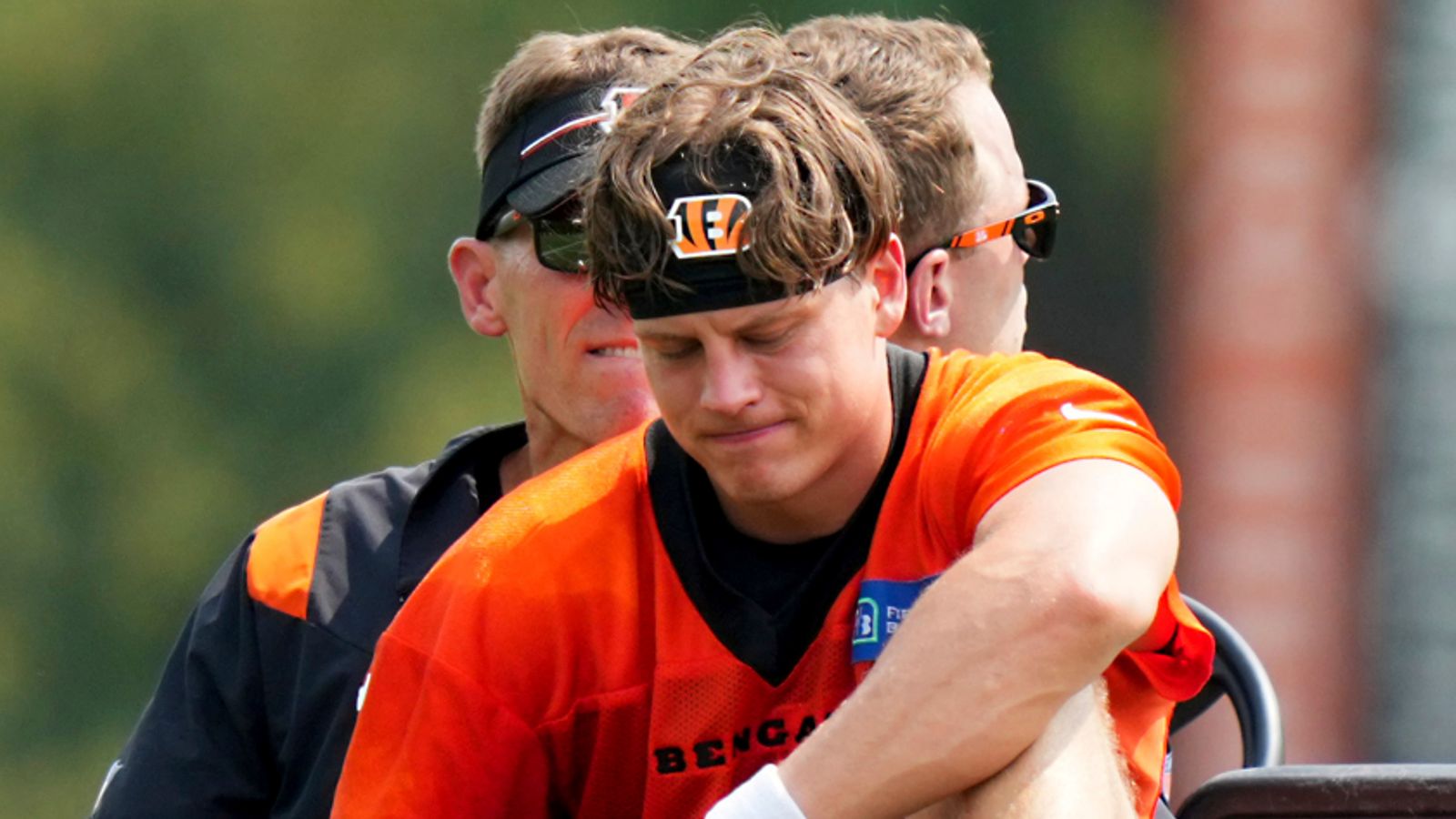With the trade of Tyreek Hill to the Miami Dolphins, the Florida franchise has gone the same way as almost a dozen teams in the NFL – expensive superstars for short-term success. But how promising is this recipe?
Munich – It is now the most frequently used term in current free agency: teams go “all-in”. A poker analogy where you push your last remaining chips (money within the salary cap) into the middle to win the whole pot (the Super Bowl).
Whereas in the past this was the exception and watched with raised eyebrows by other teams, in 2022 it seems to be the rule. Never before have so many players and even more draft picks been shuffled across the country in just over a week of Free Agency.
The Los Angeles Rams won the Super Bowl in 2021 after going, by their own admission, “all-in”. To the sacrifice of draft picks, the 2022 Rams have only three of them left (aside from compensation picks), none in the first four rounds.
Dolphins, Chargers, Broncos: all for short-term success
The NFL is a “Copycat League.” If a team does something new that works, it gets copied. Both on the field and off. The Miami Dolphins, Los Angeles Chargers, Denver Broncos, Las Vegas Raiders and Cleveland Browns, for example, are currently proving this. They have all made picks for at least one of the league’s top stars in order to see him in their colours and bring those colours to the Super Bowl.
The contracts that are negotiated are designed for short-term success. The best example: Deshaun Watson of the Browns receives only one million dollars in salary in 2022, counting only ten million dollars against the salary cap. From 2023, however, it’s a whopping 55 million dollars. So the 2022 Cleveland Browns don’t have a problem, but the 2023 Cleveland Browns do. But that doesn’t matter to the current Browns, as of now. Success must come this winter.
The New Orleans Saints are masters at pushing back the current money problems. For years, the tenor in the league has been that the Saints can’t have any more money, so to speak, yet general manager Mickey Loomis manages to extend the contracts of the stars every year. After the last contract extension of the now-retired Drew Brees, contracts were always “restructured” so that the current cap would not be burdened. Loomis restructured half a dozen contracts again this year.
The insight: cap space, which keeps rising along the way, can be circumvented relatively easily up to a certain point. A good example here is Von Miller: He signed for six years and 120 million with the Buffalo Bills, yet the expensive years are at the end of his contract. In 2027, Miller would be 39 years old, hard to believe he’ll still be playing then.
Has the college level dropped?
Are franchises increasingly divesting themselves of their high picks because the college level has dropped across the board?
In 2021, for example, the Alabama Crimson Tide’s offense alone took six players in the NFL Draft with Jaylen Waddle, DeVonta Smith, Najee Harris, Mac Jones, Alex Leatherwood and Landon Dickerson. That’s not even counting the stars on defense around Christian Barmore and Patrick Surtain.
Dozens of colleges don’t have a single draft pick. Especially at the skill positions, players who touch the ball, teams prefer to rely on the top schools. And there just aren’t a ton of them. Ben Roethlisberger, for example, came from Miami College of Ohio in 2004, and they’ve only had two players in the last seven drafts – one of them a kicker.
So has the college level gone down? Hard to judge, probably not.
However, with a Davante Adams, for example, you know you’re getting quality for sure. Henry Ruggs or N’Keal Harry are just two examples of first-round pick receivers who have disappointed. Luck always plays a role, but more so with rookies than proven stars.
Many picks and investing money does not equal success
That spending a lot of money and a lot of picks doesn’t always lead to success is proven, for example, by the Jacksonville Jaguars. In many years with many expensive free agents it was never enough for the big throw. Close was Jacksonville in 2017, however, when the stars were players playing on the rookie contract like Myles Jack or Jalen Ramsey.
2022 is the next attempt to buy success. “The Jacksonville Jaguars have been throwing money around like there’s no tomorrow,” reads the official NFL site. And so it has been. “I hope we don’t have to do that again in the near future,” said general manager Trent Baalke. The “Jax” spent a whopping $155 million in guaranteed money on new contracts in 2022.
Together with the nominally top-ranked draft picks, the Jaguars could be successful – but one should rather not be so optimistic due to the young franchise’s low-yielding past.
Mega trades are nothing completely new
Such outrageously big trades as Watson’s have happened in the past. In 1989, the Dallas Cowboys traded running back Herschel Walker to the Minnesota Vikings for a total of eight draft picks. It is still the biggest trade in NFL history.
However, the trade completely backfired from the Vikings’ point of view. The men from Minneapolis achieved very little in the 1990s, while the Dallas Cowboys built a dynasty with three Super Bowl victories with the flood of draft picks in those 90s.
To this day, that trade is known as the “Great Trade Robbery,” modeled after the Great Mail Train Robbery of 1963.
Counter to the Trade Madness: Bengals and Patriots
However, not the entire league is falling into win-now mode. A counter design, for example, is the Cincinnati Bengals. They reached the Super Bowl last season with a majority of players drafted in-house. Ja’Marr Chase (2021), Joe Burrow (2020), Tee Higgins (2020), Joe Mixon (2017) and Tyler Boyd (2016) are just the top names in the offence that the Bengals once selected themselves. So the Super Bowl against the Rams was the biggest contrast possible.
While the Cincinnati franchise has spent above-average money in free agency this season, the majority of it has been on the offensive line. This addressed the biggest weakness of last season.
The New England Patriots are also a counter-draft. With the exception of Free Agency 2021, when Bill Belichick brought in a whopping four high-priced pass receivers, the Patriots mostly hold back on big contracts.
Jamie Collins reached NFL attention in 2016 when he demanded more money from Bellichick. But instead of a contract extension, he got a plane ticket to Cleveland, where he was almost traded outright. Later, the Pats brought Collins back as a free agent for little money. Bill Belichick only pays selected players of whom he is convinced. Example is Stephon Gilmore, brought in for big money in 2017 and named Defensive Player of the Year in 2019.
Which way is the right way?
The NFL is constantly changing, it always has. It’s possible the current trend is just that – a trend that will eventually reverse itself.
No matter which way the teams go, the goal is the same: the 2022 Super Bowl in Las Vegas.
The only thing that is certain is that, just like in poker, only one of the players who bet all-in can win the pot. In the process, 31 teams are left disappointed. Some more, some less.






Comments
No Comments